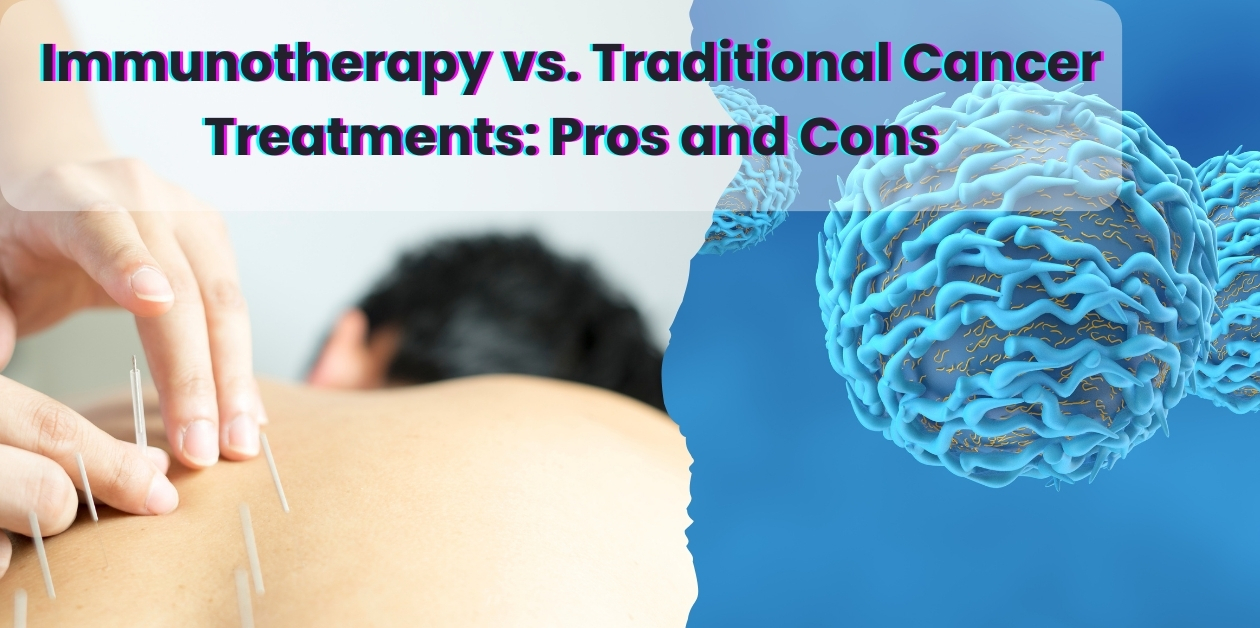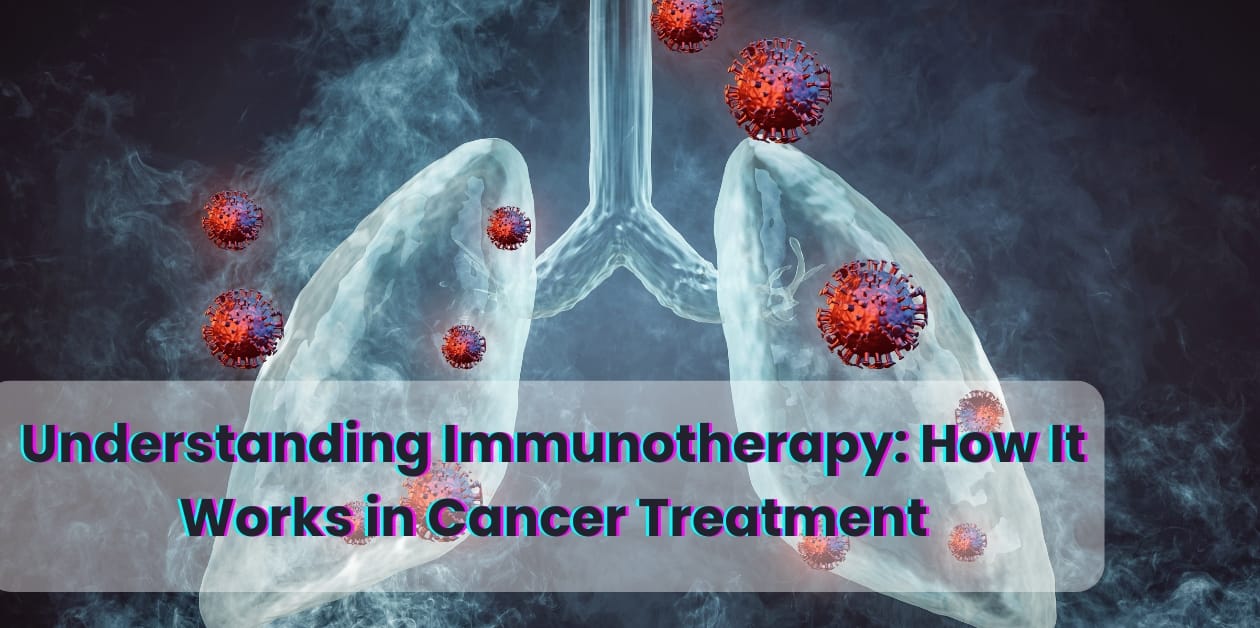Testicular Cancer: Symptoms, Causes, Diagnosis and Treatment

Testicular cancer is an uncommon but dangerous health problem that affects men between the ages of 15 and 35. In light of this, knowing the definition and scope of the problem—the symptoms, causes, risk factors, prevention, diagnosis, treatment, types, stages, and prognosis—is crucial for the early detection and management of the disease. Let us learn about the aspects of testicular cancer in this blog.
What is Testicular Cancer?
Testicular cancer originates from either one or both testicles, which are the male reproductive glands lying in the scrotum. The scrotum is the sac of skin that covers the testis. These glands produce sperm and are responsible for the secretion of hormones, particularly testosterone.
Recent posts
Immunotherapy vs Traditional Cancer Treatments: Pros and Cons Cancer treatment has evolved significantly, with immunotherapy emerging as a revolutionary approach alongside traditional …
Understanding Immunotherapy: How It Works in Cancer Treatment At Pi Health Cancer Hospital, we are committed to providing the most advanced and …
What are the symptoms of testicular cancer?
Symptoms of testicular cancer include the following:
- A lump or swelling in either testicle that feels painless.
- A feeling of heaviness in the lower abdomen or scrotum.
- A dull pain in the lower abdomen or scrotum.
- A sudden swelling of the scrotum.
- Discomfort in a testicle or the scrotum.
- Tender or enlarged breast tissue.
- Back pain.
What are the causes and risk factors for testicular cancer?
Although the exact cause of testicular cancer is not clearly known, there are still several risk factors associated with it. These include:
- Age: The most common age bracket that most commonly falls into these cases of testicular cancer is men between the ages of 15 and 35 years.
- Undescended testicles: An undescended testicle is one that does not descend into the scrotum before birth. Their presence increases the risk of developing testicular cancer.
- Family History: The likelihood of developing testicular cancer is more common if there is a family history of it.
- Certain genetic conditions: Certain genetic conditions might predict developing testicular cancer.
How is testicular cancer diagnosed?
There are a few steps that help detect any anomaly in the testis and thus confirm it as malignant. The earlier the detection, the greater the chance of early intervention and the possibility of better outcomes. Below is a brief overview of the steps involved in the diagnostic process for testicular cancer:
- Physical Examination: The healthcare provider will do a thorough physical examination that includes a palpation of the testicles, the scrotum, the abdomen, and the groin for any abnormalities. They will look out for the presence of lumps, swelling, or changes in the testicles’ texture or size.
- Imaging Tests: These tests may also be done in case there are any physical findings or symptoms suggesting testicular cancer. Imaging tests commonly used include:
- Ultrasound: This is a noninvasive imaging modality using high-frequency sound waves to create very detailed images of the testes. The ultrasound can help in finding the presence of masses, cysts, or any other forms of pathology in the testes.
- CT Scan: Computed tomography scan may be considered in order to get cross-sectional images of the abdomen and pelvis. A CT scan is useful to evaluate whether the disease has spread to the peri-abdominal lymph nodes, other organs, or distant sites.
- Magnetic Resonance Imaging: MRI scans create high-quality images with powerful magnetic fields and radio waves. MRI can assess the extent of the disease and most importantly, its spread towards adjoining structures.
- Biopsy: If there is a palpable, suspicious mass or abnormality found during a physical examination or imaging tests, a biopsy is to be done to gain a tissue sample for further analysis. However, the need for biopsy is unnecessary in some instances for testicular cancer, provided that the imaging tests have enough evidence to reach a diagnosis.
- Blood tests: Blood tests that are performed to assess the levels of proteins in the blood called tumor markers, which are raised in most people who have testicular cancer. The most common tumor markers associated with testicular cancer are alpha-fetoprotein, human chorionic gonadotropin, and lactate dehydrogenase. An increase in these markers may point to the existence of testicular cancer and may be helpful in decisions for treatment.
The diagnosis of testicular cancer depends on a combination of physical examination, imaging tests, biopsy, and tumor marker tests. Diagnosis in an early phase and the correct assessment are of great importance to begin timely treatment and improve prognosis in individuals suffering from testicular cancer. Regular self-examination and timely medical review of the complaint of symptoms of concern are very important to achieve an early diagnosis and appropriate treatment of this condition.
What are the treatment options for testicular cancer?
Most cases of testicular cancer will be treated with combinations of all the available treatments, depending upon the type, stage, and aggressiveness of the cancer. Treatment is directed toward the removal of the cancerous cells from the testis, with the least possible risk of recurrence, and the preservation of general health and fertility. Following is a summary of the major treatment options for testicular cancer:
- Orchiectomy: This is a surgical removal of the affected testicle and is the main treatment for testicular cancer. During an orchiectomy, the entire testicle containing the tumor is removed through a small incision in the groin. The unaffected testis usually continues to produce normal hormones and secrete sperm. For early-stage testicular cancer, the orchiectomy can be curative. In other cases, other forms of treatment are needed, based on the characteristics of the cancer.
- Chemotherapy: It uses strong drugs that kill cancer cells or halt their further growth and multiplication. Adjuvant chemotherapy could be prescribed after the removal of the testicle, a measure to destroy the remaining cancer cells, and in case the testicular cancer has spread outside to other parts of the body-metastatic or advanced testicular cancer. Different combinations of drugs and periods of chemotherapy are used according to the type and stage of testicular cancer.
- Radiation Therapy: This involves high-energy beams of radiation aimed at cancer cells to knock out the cancer. It can be used in some cases to treat testicular cancer in which the cancer has spread into adjacent lymph nodes or has become too widespread to be removed by surgery. Treatment is usually carried out externally using a machine that targets radiation beams onto the affected area. The duration and intensity of the radiation therapy depend on the size and location of the tumor.
- Targeted therapies and immunotherapy: In recent years, targeted therapies and immunotherapy have emerged as the mainstay treatments for some forms of testicular cancer, particularly in advanced or refractory cases. Targeted therapies and immunotherapy target specific molecules or proteins involved in cancer growth and proliferation or enhance the immune response of the body against cancer cells. Therapies are generally used when other treatments have been ineffective or not well tolerated.
The treatment of the condition is highly individualized and may be a combination of surgery, chemotherapy, radiation therapy, and other targeted immunotherapies. This choice depends on the type and stage of the cancer, in addition to the general health, the individual patient’s preference, and the presence of underlying conditions. With continued development in both medical technology and treatment modalities, the prognosis for testicular cancer has, to date, continuously improved to a significant degree. Many individuals with testicular cancer achieve long-term remission and a good quality of life post-treatment. Early detection and early intervention remain critical for getting the best possible results for patients affected by cancer.
Prognosis and Outlook
The prognosis of testis cancer remains quite hopeful and optimistic, especially when diagnosed and treated early. Even in the case of the metastasis of testis cancer throughout the body, it is very curable. As for the medical prognosis of testis cancer, a recent study on the 5-year survival of testis cancer patients between 1975 and 1993 showed that the survival rates of testis cancer have continued to improve as the advances in medical technology and treatment options have further improved.
Testicular cancer is a rare disease that can be fatal if left undiagnosed and untreated. Symptoms, risk factors, and existing diagnostic techniques need to be understood along the care path so that early intervention leads to better outcomes. Early detection and proper management of this can be achieved through an increase in awareness via early self-examination and regular medical checkups. Proactive healthcare practice is key to fighting this condition and ensuring complete health.
About Author
Dr. A. Venugopal
MD (General Medicine), DM (Medical Oncology), MRCP – SCE Medical Oncology (UK), ECMO (Switzerland).
Dr A. Venugopal is One of the best medical oncologist and Hemato Oncologist in hyderabad, currently serving as the Head of the Department and Senior Medical Oncologist, Hemato Oncologist at Pi Health Cancer Hospital in Gachibowli, Hyderabad. He brings over 15 years of extensive experience in the field of Oncology.



